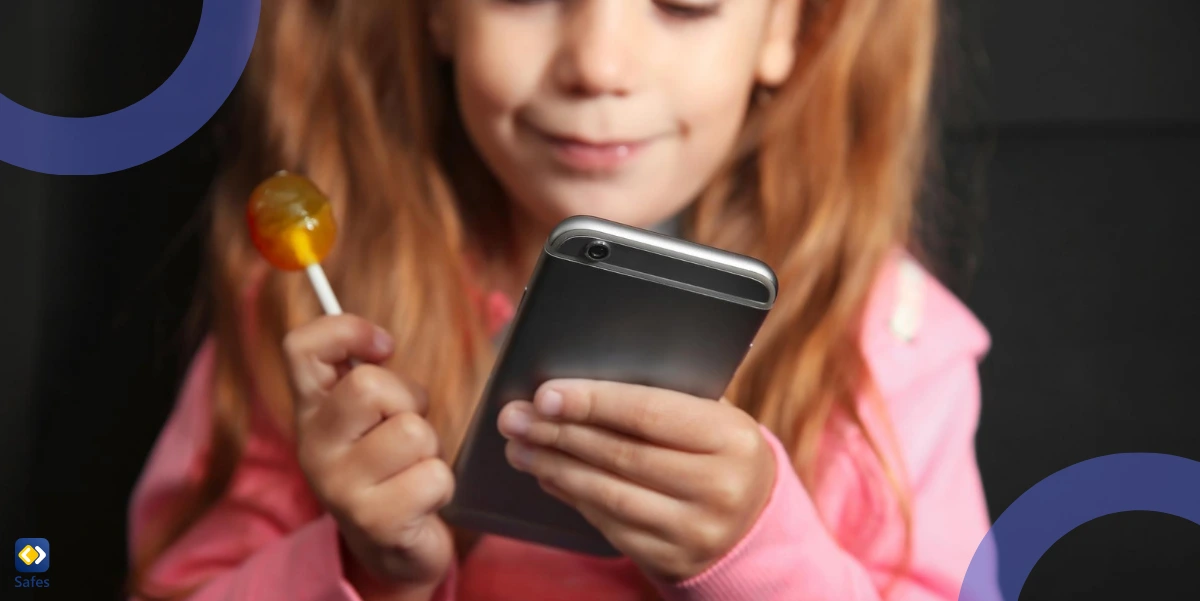The question of “What age should a kid get a phone?” is a subject of much debate among parents. As smartphones and tablets become increasingly prevalent, determining the appropriate age for cell phone owning for kids can be a complex decision. While some argue that early exposure to technology fosters essential digital literacy, others express concerns about the potential risks and distractions associated with unrestricted access to mobile devices.
Download and Start Your Free Trial of the Safes Parental Control App
The Allure of Connectivity
For many children, the appeal of owning a phone lies in the promise of constant connectivity. Mobile devices offer a gateway to a world of social interaction, entertainment, and information, all at the touch of a screen. Kids often crave the ability to stay in touch with family members and friends, play games, watch videos, and explore educational apps. This desire for inclusion and engagement can exert significant peer pressure, as children observe their classmates and friends carrying their own devices.
Parental Perspectives: A Spectrum of Beliefs
Parents hold a wide range of views regarding the appropriate age for children to possess mobile phones. Some staunchly believe that kids should not have access to phones until they reach a certain age or level of maturity, citing concerns about online safety, distraction from physical activities, and potential negative impacts on mental health. Others, however, advocate for providing children with basic phones or smartwatches at a younger age, allowing for limited communication and monitoring capabilities.
At the opposite end of the spectrum, some parents embrace the idea of equipping their children with smartphones from an early age, believing that it fosters technological proficiency and prepares them for the digital world they will inevitably navigate.
“Every Child Should Have a Mobile Phone” Advantages and Disadvantages
When considering whether to grant a child access to a mobile phone, it is crucial to evaluate both the potential benefits and drawbacks. On the positive side, phones can serve as a valuable communication tool, enabling children to stay in touch with parents and seek assistance when needed. Additionally, educational apps and online resources can supplement learning and foster intellectual curiosity.
However, the risks associated with unrestricted internet access and social media exposure cannot be ignored. Cyberbullying, exposure to inappropriate content, and the potential for online predators are legitimate concerns that parents must address. Furthermore, excessive screen time and addictive tendencies can negatively impact physical activity, sleep patterns, and overall well-being.

Striking a Balance: Responsible Phone Ownership
For parents who decide to introduce mobile devices to their children, establishing clear guidelines and boundaries is essential. Setting age-appropriate restrictions, implementing parental control measures, and fostering open communication about responsible phone usage can help mitigate potential risks while still allowing children to reap the benefits of technology.
Parental control apps, such as Safes, offer a comprehensive solution for managing children’s digital experiences. These apps enable parents to monitor online activity, filter inappropriate content, set screen time limits, and even block specific apps or websites. By leveraging such tools, you can create a safer and more controlled environment for your child’s mobile device usage.
To experience the potential of parental controls in creating a safe environment for your child’s digital endeavors firsthand, we invite you to try Safe’s free trial today. By taking advantage of this opportunity, you can explore the app’s features and determine how it can best support your family’s needs.
Developmental Considerations
When determining the appropriate age for a child to receive a phone, it is crucial to consider their developmental stage and maturity level. Children’s cognitive abilities, impulse control, and decision-making skills evolve as they grow older, influencing their readiness to navigate the digital realm responsibly.
Experts suggest that around the ages of 12 to 14, many children possess the necessary social awareness and understanding to handle the responsibilities associated with owning a phone. However, this age range should be viewed as a general guideline, as every child is unique, and their individual circumstances and maturity levels should be taken into account.
Fostering Digital Literacy and Responsibility
Introducing children to mobile devices should be viewed as an opportunity to cultivate digital literacy and responsible technology usage. Parents play a pivotal role in guiding their children through this process, setting clear expectations, and modeling positive behaviors.
Engaging in open dialogues about online safety, cyberbullying, and the importance of maintaining a healthy balance between screen time and physical activities can help children develop a well-rounded understanding of the digital landscape. Additionally, encouraging critical thinking and media literacy skills can empower children to navigate the online world with discernment and resilience.
Tailoring the Approach: Every Child is Unique
While general guidelines and expert recommendations can provide a framework, it is essential to recognize that every child is unique, and their readiness for a mobile device may vary. Some children may demonstrate a higher level of maturity and responsibility at a younger age, while others may require more time and guidance before being entrusted with a phone.
Parents should carefully observe their child’s behavior, assess their ability to follow rules and handle responsibilities, and make an informed decision based on their individual circumstances. Involving children in the decision-making process and setting clear expectations can foster a sense of ownership and accountability.

Creating a Family Technology Plan
Establishing a comprehensive family technology plan can help ensure a smooth transition when introducing mobile devices to children. This plan should outline clear rules and guidelines for phone usage, including designated screen-free times, content restrictions, and consequences for violating the established boundaries.
Regular family discussions and check-ins can help reinforce these guidelines and provide opportunities for open communication about any concerns or challenges that may arise. By involving children in the creation and implementation of the technology plan, parents can foster a sense of responsibility and collaboration.
Embracing Technology with Wisdom and Guidance
In the digital age, denying children access to mobile devices may not be a realistic or desirable approach. Instead, parents should strive to embrace technology while exercising wisdom and providing guidance to their children.
By fostering open communication, setting clear boundaries, and leveraging parental control tools, parents can create a safe and enriching environment for their children’s digital experiences. Ultimately, the decision of when to introduce a mobile phone should be based on a careful assessment of each child’s unique needs, maturity level, and family dynamics.
Final Verdict: Should Children Have Cell Phones?
As technology continues to evolve and permeate every aspect of our lives, it is essential to adopt a balanced approach when introducing children to mobile devices. While the allure of constant connectivity and entertainment can be enticing, it is crucial to prioritize online safety, mental well-being, and the cultivation of a healthy relationship with technology.
By engaging in open dialogues, setting clear boundaries, and leveraging parental control tools, parents can empower their children to navigate the digital landscape responsibly and reap the benefits of technology while mitigating potential risks.
Ultimately, the decision of when to provide a child with a mobile phone should be based on a careful evaluation of their individual maturity level, family dynamics, and the ability to foster a healthy balance between digital and physical experiences. With wisdom, guidance, and a commitment to digital literacy, parents can equip their children with the tools and knowledge necessary to thrive in the ever-evolving digital world.
Your Child’s Online Safety Starts Here
Every parent today needs a solution to manage screen time and keep their child safe online.
Without the right tools, digital risks and excessive screen time can impact children's well-being. Safes helps parents set healthy boundaries, monitor activity, and protect kids from online dangers—all with an easy-to-use app.
Take control of your child’s digital world. Learn more about Safes or download the app to start your free trial today!




